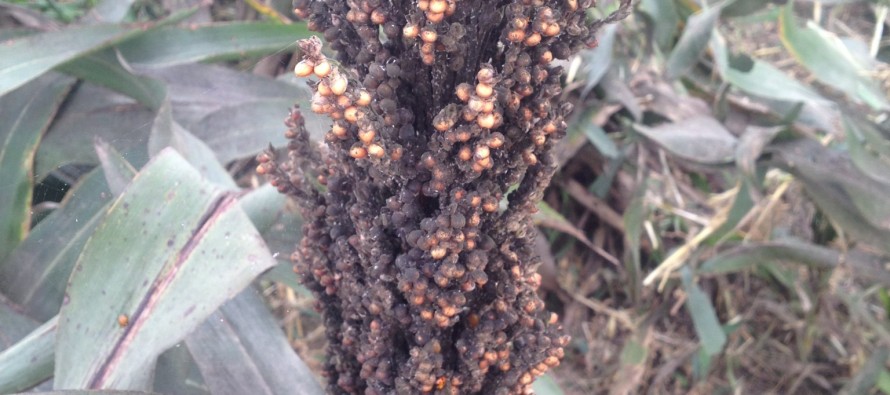Importance of Managing Sugarcane Aphids in Grain Sorghum at Harvest

Related Articles
- 2010 Soybean And Corn Variety Trial Data 3
- Spring Nitrogen Fertility Suggestions for Wheat 0
- Mississippi Cotton Insect Situation of 2010: A Look Back 3
Latest Tweets
Some grain sorghum still remains to be harvested around the state and sugarcane aphid populations have remained high in a lot of areas. We had a post by Erick Larson and Angus Catchot a couple of weeks ago here about use of harvest aids and managing sugarcane aphid. There is some very good information in that post, but we have generated some new information since that time that demonstrates the importance of controlling sugarcane aphids at harvest.
We sprayed a test in Stoneville on August 28, 2015 to test harvest aids mixed with Transform. A couple of things we learned from that test are:
 1. Populations can continue to build for a few days following an application of Roundup where Transform was not added.
1. Populations can continue to build for a few days following an application of Roundup where Transform was not added.
2. Coverage with sodium chlorate is critical. The picture to the left shows a flag leaf that had about 20 aphids on it at the time of application (8/28). This picture was taken 4 days (9/1) after application and there were well over 100 aphids on that leaf at that time. By the time we harvested the plot 7 days later (9/8), the aphids had almost completely covered every green area on that leaf.
3. We saw slight yield protection from adding Transform even when the application was made only 14 days before harvest. This was likely due to harvest efficiency. The differences in yield from adding 1 oz. of Transform were:
a. Chlorate (124.7 bu) vs. Chlorate + Transform (128.2 bu) = +3.2%
b. Roundup (122.5 bu) vs. Rup + Transform (128.0 bu) = +4.2%
c. Untreated Control (120.7 bu) vs. Transform (128.5 bu) = +6.0%
You can also see that when aphids are present, there is some benefit to applying a harvest aid alone (Chlorate and Roundup treated plots yielded 4.7 and 2.5 bushels better than the no harvest aid plots). However, the greatest benefit came from the addition of using something to manage the aphids.
 The overall goal is to keep aphids out of the top of plants to avoid yield losses and help with harvest efficiency. Aphids will move back and forth between the head and lower parts of the plant throughout the day and night. The picture to the left shows a head where we never saw aphids during the day. You can tell that the aphids were in the head at some point because of the sooty mold. This is a worst case scenario where there were extremely high populations and no control.
The overall goal is to keep aphids out of the top of plants to avoid yield losses and help with harvest efficiency. Aphids will move back and forth between the head and lower parts of the plant throughout the day and night. The picture to the left shows a head where we never saw aphids during the day. You can tell that the aphids were in the head at some point because of the sooty mold. This is a worst case scenario where there were extremely high populations and no control.




Let me tell You a sad story ! There are no comments yet, but You can be first one to comment this article.
Write a comment